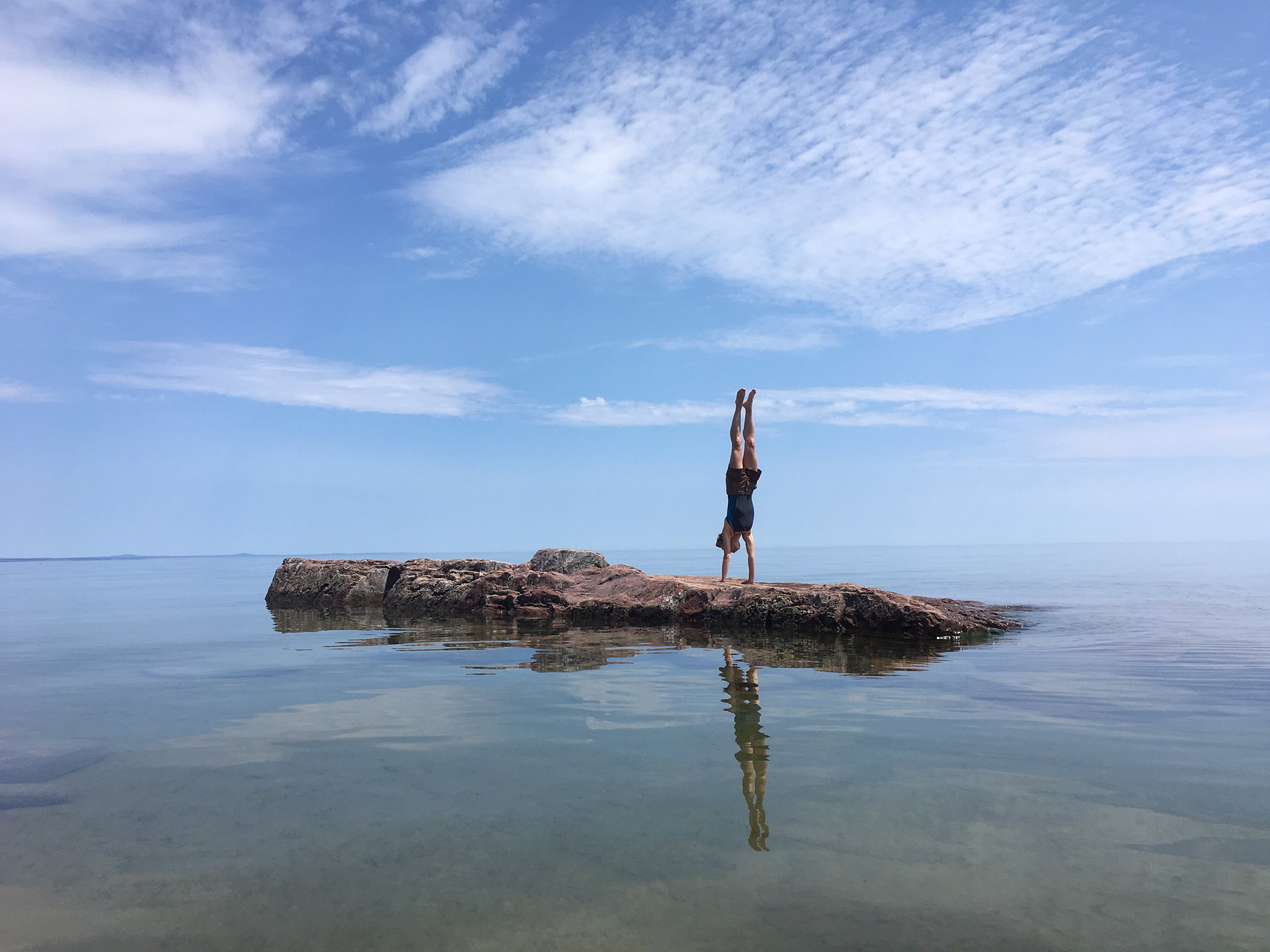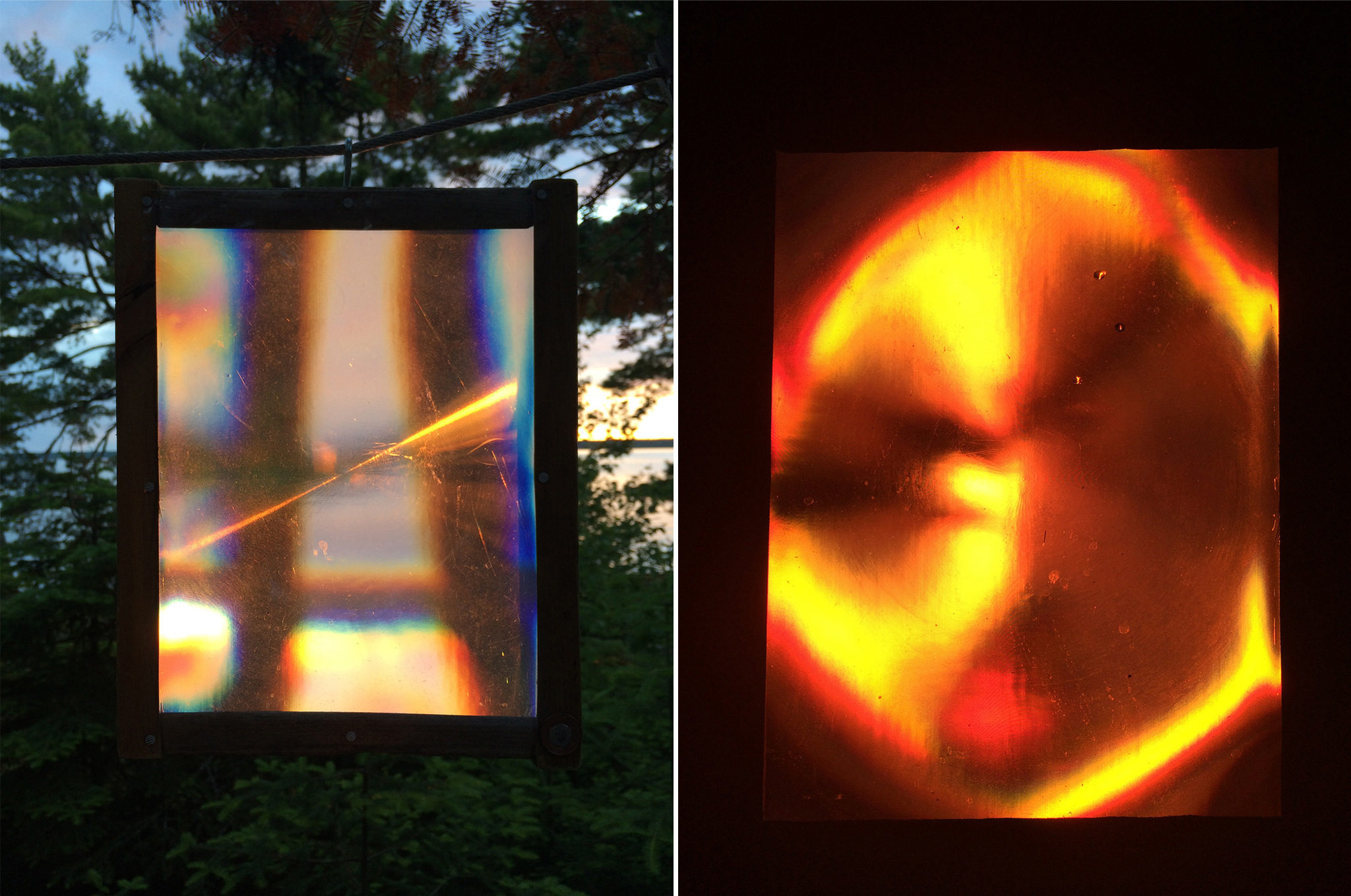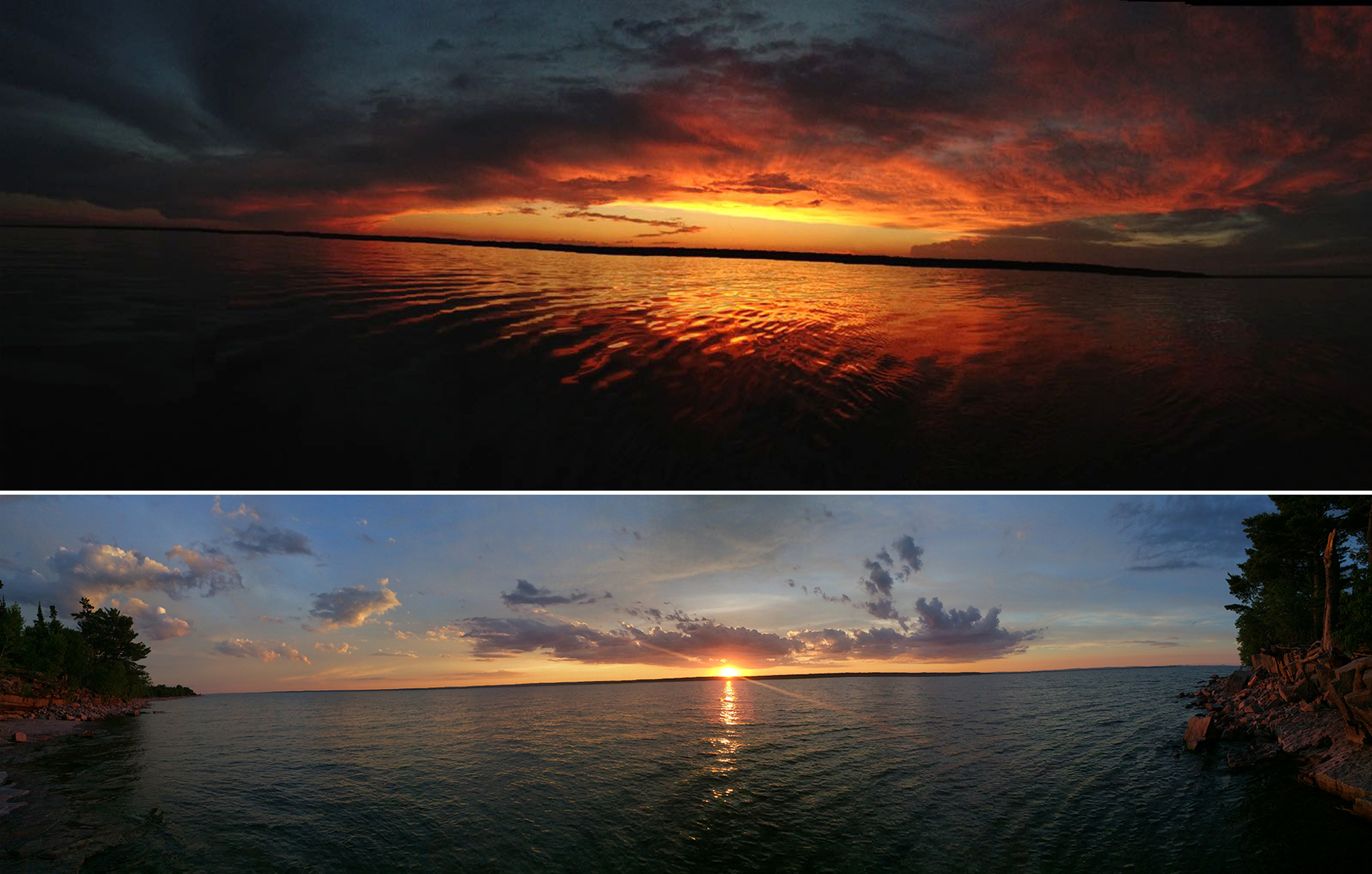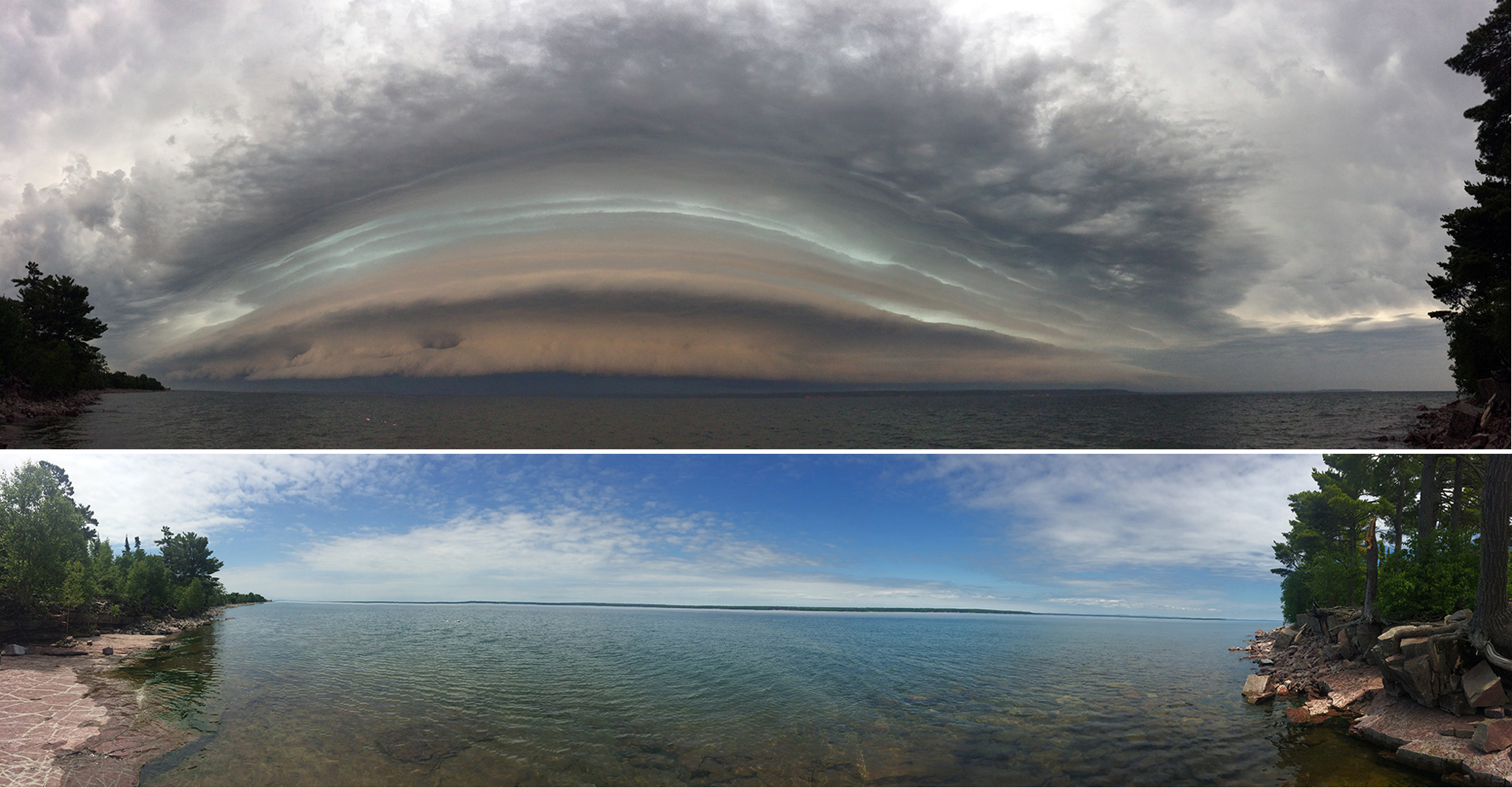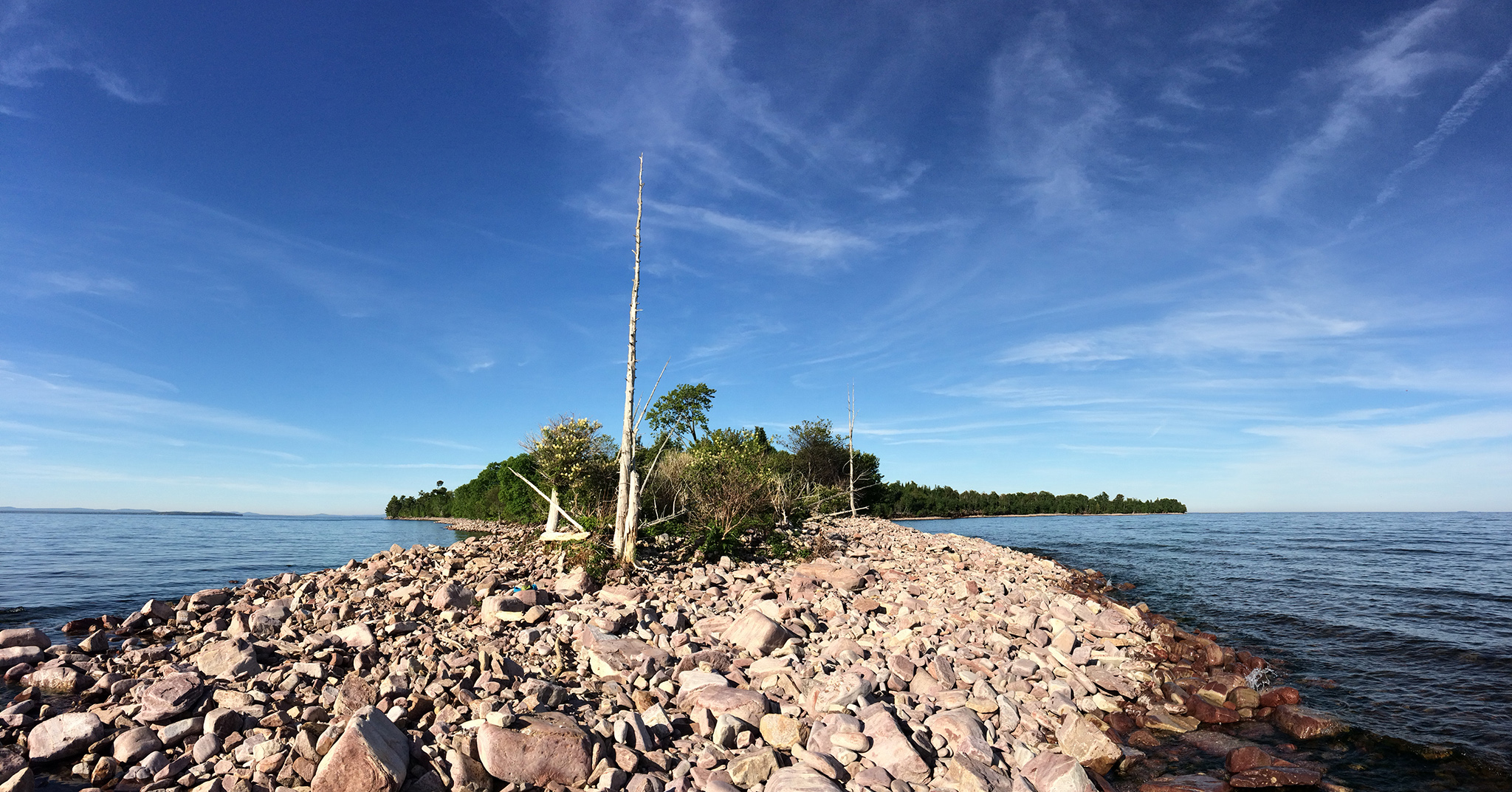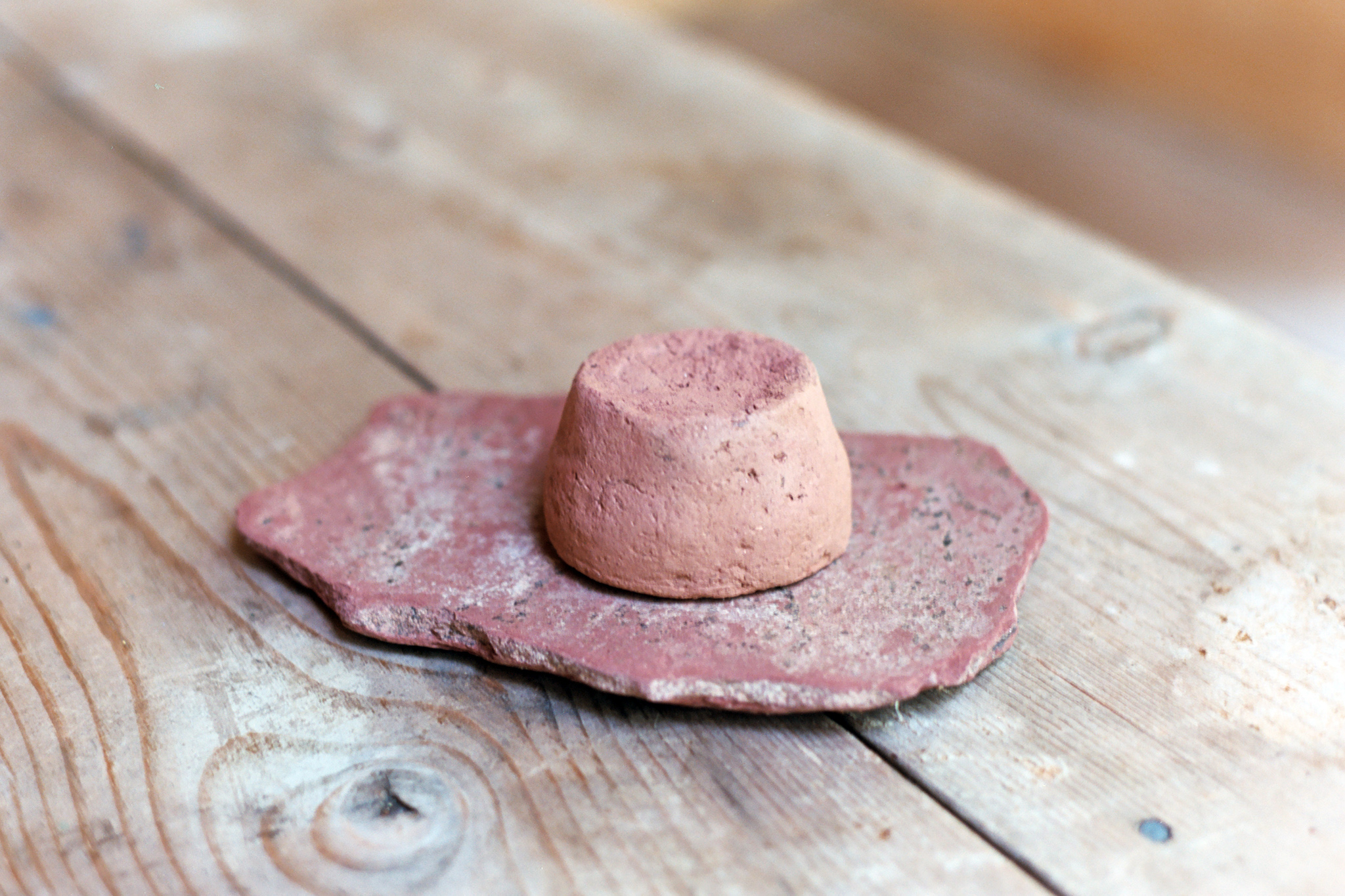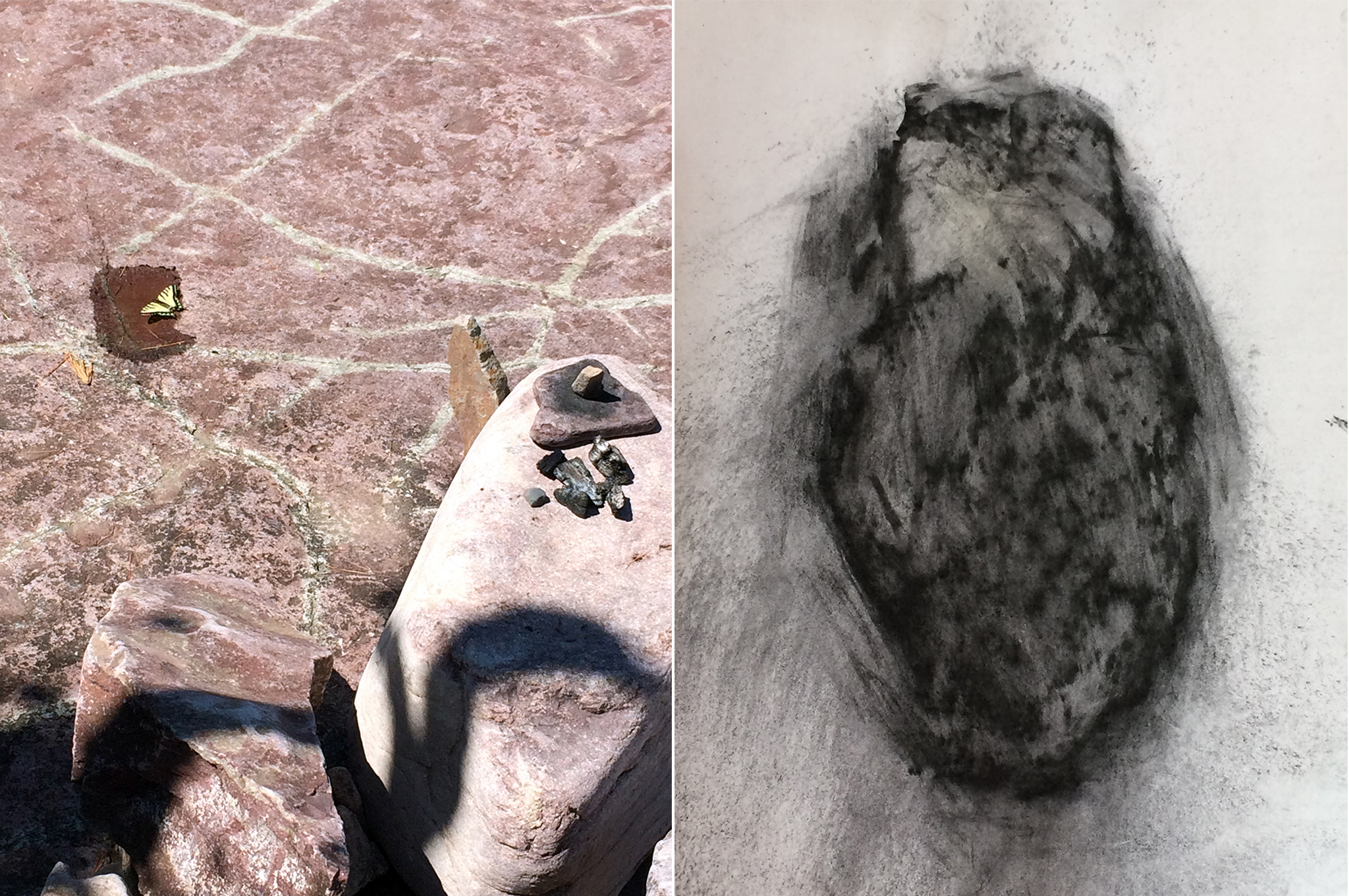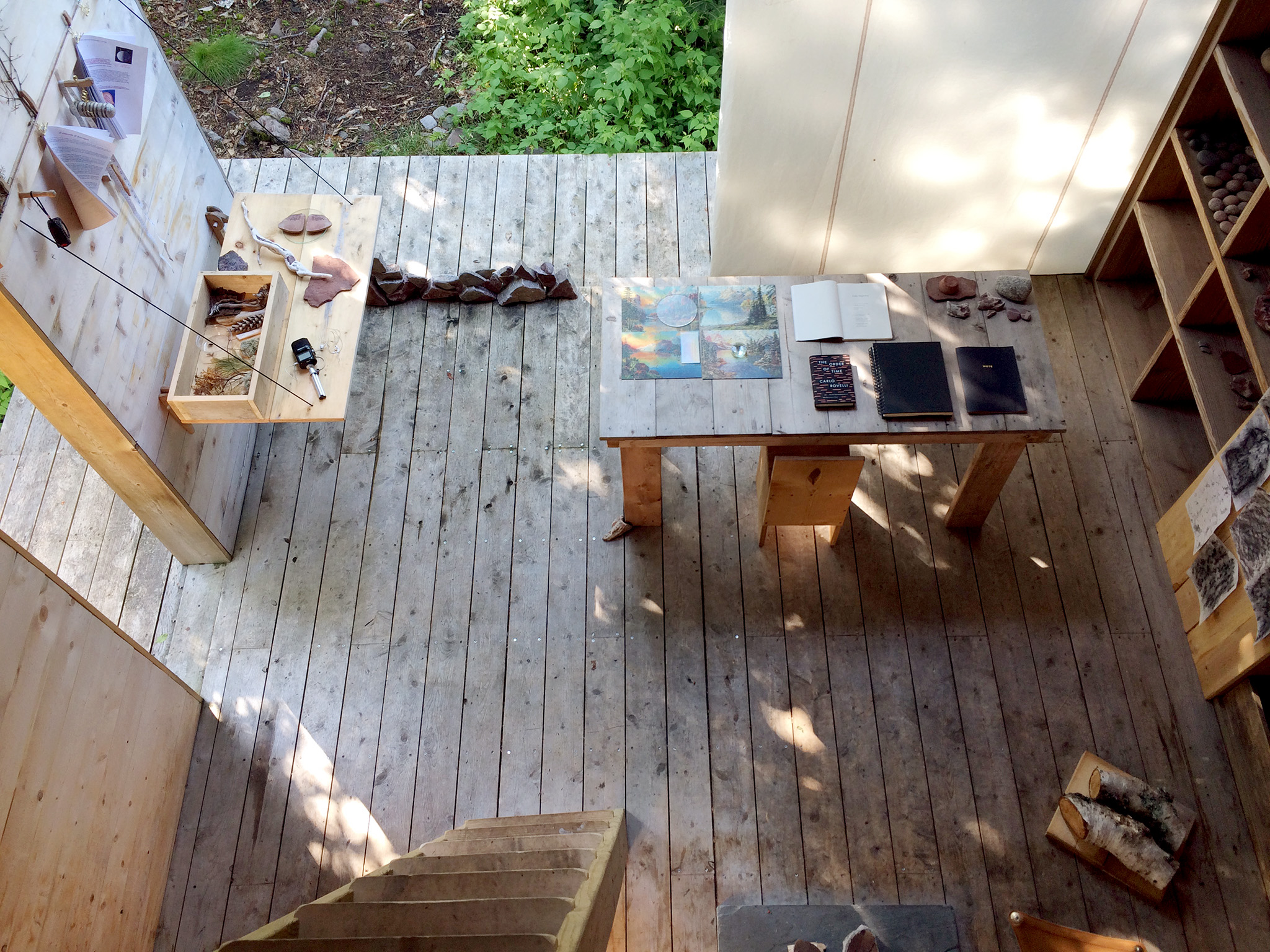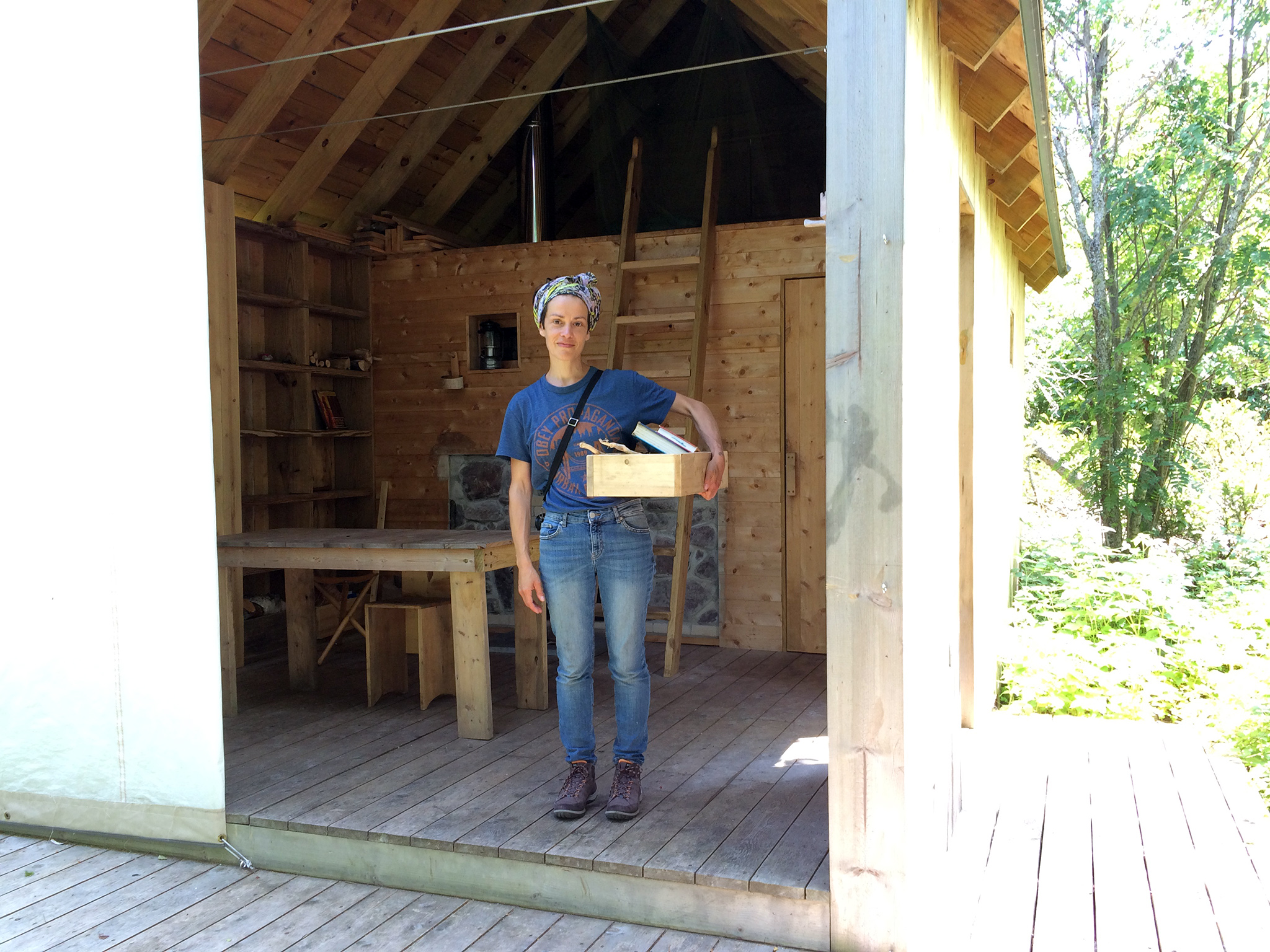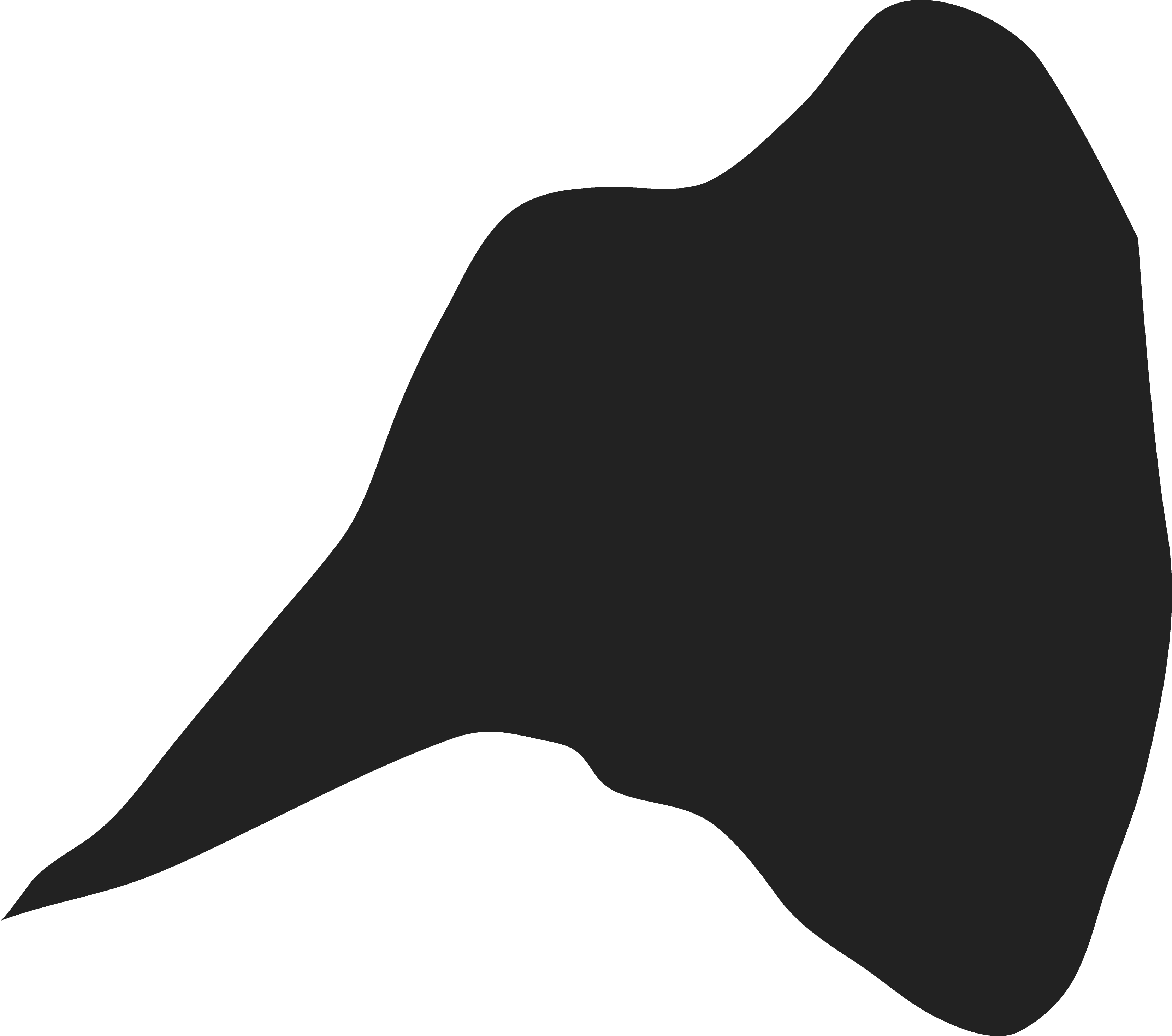I don’t draw
In every part of every living thing
is stuff that once was rockIn blood the minerals
of the rock
"Lake Superior", by poet and writer Lorine Niedecker, was initially published in 1968, but it was only in the early 2000s that her work drew the attention of feminists students and a wider public. Since then, her writings have been republished, and her work deeply studied.
I stumbled across it by chance while planning my art residency at Rabbit Island. Her journals are like geological fragments of life and landscape in which I found myself reflected and broken down, not critically, rather significantly.
Ever since I was a child, I have always picked up small glass stones, rocks, shells from the seashore in Liguria, Italy: debris of land where, for months, I grew up every summer.
Like an unwitting geologist, I have collected hundreds of beautiful treasures, saving them from the hands of other children or simply from being lost forever on the beach or again in the water. There was always a simple thought for each little 'gem': sometimes, I wondered where the stone came from; some other times, I imagined how was the original shape of the coloured glass bottle, what it was used for.
The shore on a beach is the liminal space between water and land.
It represents the relationship between two different dimensions: that of walking and that of swimming. The contemplation of the material, the care of the research, the need to collect what I involuntarily sought was a way to perform my time. As in a mantra, but without the instrument of the voice, my body became the tool to experience the two different parts of the same environment, and my gestures started defining a different experience of the landscape. Years later, I realised that I was trying to collect to reconstruct 'something': like an architect of a fractured city that isn't there anymore who has to re-imagine it with a better function and a more solid and possibly greener body to define it.
Rabbit Island allowed me to extend this approach to a different scale of curiosity and research. The island became an extension both of my body and my practice. The landscape fragments became rocks of an environmental puzzle. The ‘floating’ and the ‘order’ of time* were measured by the atmospheric agents I related to as never before, and I chose to draw with what I could not control: the smoke, the fog, the clouds, the fractures in the rocks, the circles in the water, the waves, the sunlight, the rain.
"I don't draw", the project that came out of my one-month solo residency, is about the impossibility of being an artist voluntarily; it's a daily exercise to how to give up and how to discover again the meaning and the necessity of doing art today.
My artistic practice, influenced by the surroundings, merged with them to create regular performances. I was the only spectator, along with a different and unique audience: birds, insects, fishes, snakes, bald eagles, even - incredibly - a little weasel.
A bit like Lorine Niedecker told her journey in fragments, which is intimate and linked to the ‘geology of her perceptions’, I photographed the relationship with a place from which I could not - and did not want to - move away, to where I constantly try to return.
Rabbit Island (Traverse Island) helped me experiment myself. I became the island somehow, protected by Lake Superior from the detached and a gentrified environment we are constantly developing around us.
*The order of Time - Carlo Rovelli (Penguin Publishing Group, 2018)
I regularly question the photographic medium, especially all that comes from the action of using it. At the center of my research, I often relate sculpture and photography, with varying outcomes that are contain a matrix of both disciplines, and always concerning the complex natures of temporality and fragility in the mediums and materials.
I use literature, science or history as inspiration for my work, recreating ambiguous images, or memorials, where various objects or the idea of them, are obsessively collected in a subtraction process where I consider an unknown reality. I am interested in peculiar geographical sites, in which I can underline the psychological relationship between individuals and nature through photographic and analytic sculptures.
What would the world be like without time?
My interest in floating islands, seen as monuments, pre-existing architectures, and hourglasses, began several years ago with a study on the lightweight structural concrete. The lightweight structural concrete, in use since the seventies, is an insulating construction material with a low specific weight. Blocks can be easily sculpted and depending on the composition density, they can float in liquids. Once submerged in water, a second possible reality is created beneath the surface, which becomes a natural partition between this world - in constant evolution and destruction - and another that preserves what is slowly lost in this one. Water, therefore, becomes a metaphor: something that covers, protects, preserves and feeds what is destroyed. Something that gives physicality to an invisible, hypothetical and ephemeral reality.
What’s the meaning of above and beneath, then?
Is there a relationship between the two parties?
Do they have a common time?
The relationship between space and time is similar to a large hourglass: a cone that in physics is also the symbol of time. It is theorized that time flows differently depending on the geographical position of the subject. In the mountains, it passes faster, slowly in the plain. In space, the time as we know it does not exist and everything float because time is uniform. Above and below the floating islands, above and below the surface of the water, will the time be different? What would the Earth be like if suddenly everything will be upside down?
Starting from these considerations I would like to measure the time on Rabbit Island, from the two more distant and vertical points of it. Below, towards the bottom of the lake and above, on the top of the highest tree. The measurement can also be hypothetical, investigated through photographs, drawings, and materials. What will be the flow of time or its sudden and hypothetical absence? The two different points are the possibility of a choice: they represent the future and the past, while the island becomes the space of the present, where to hypothesize solutions. Once you get off the ground this possibility becomes real: how much time do we really have? Could it end?
